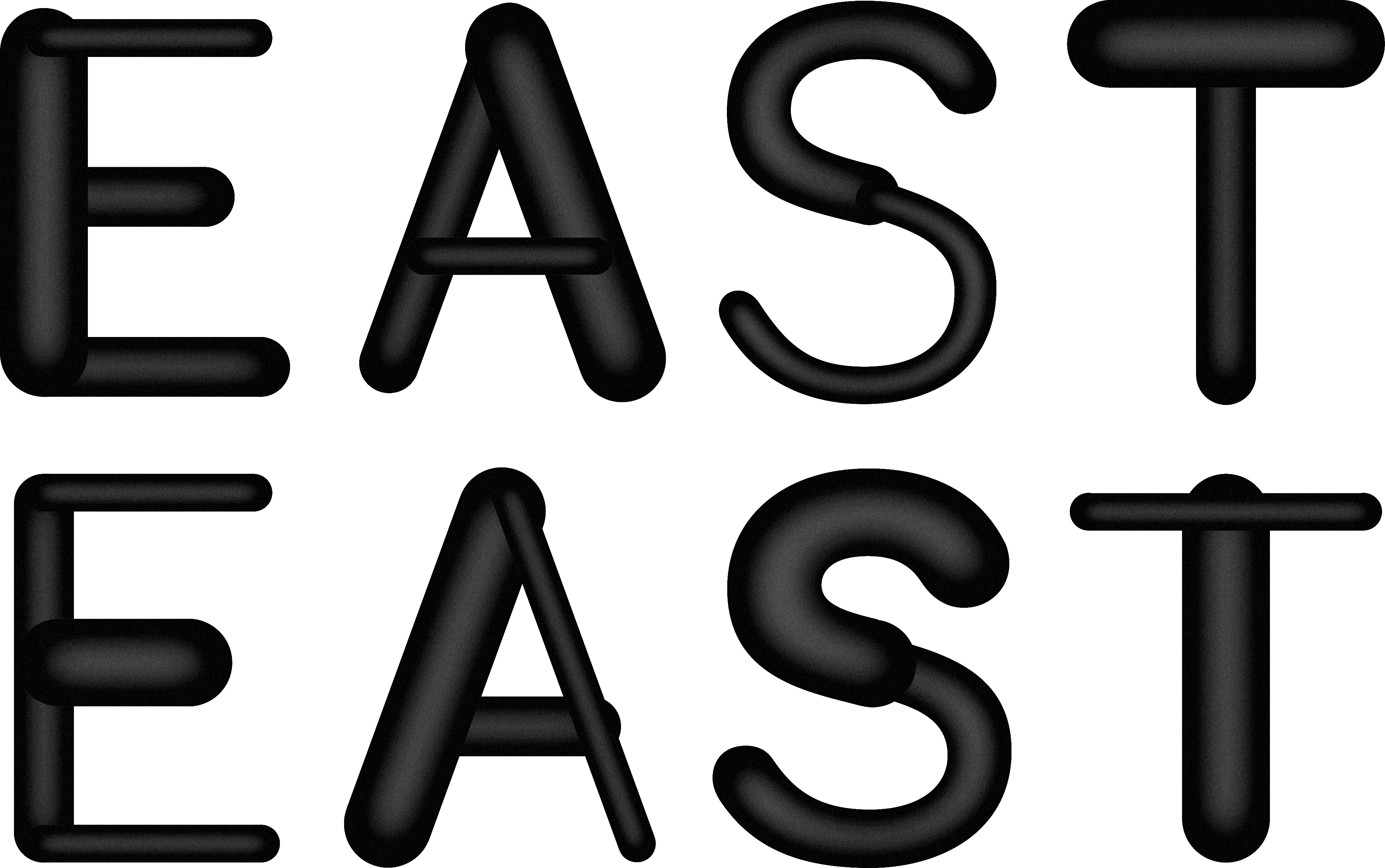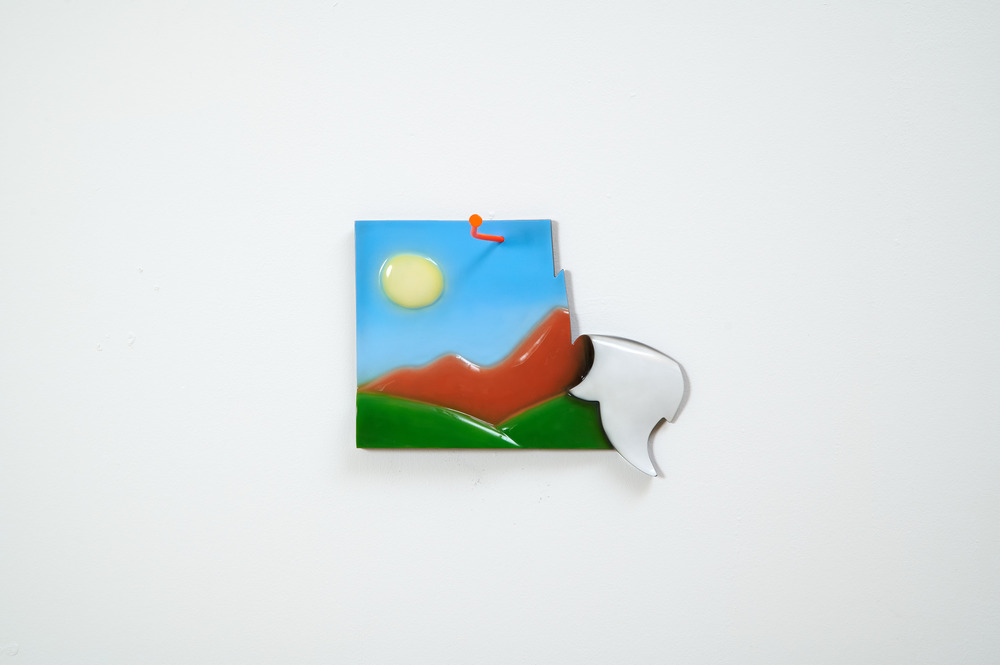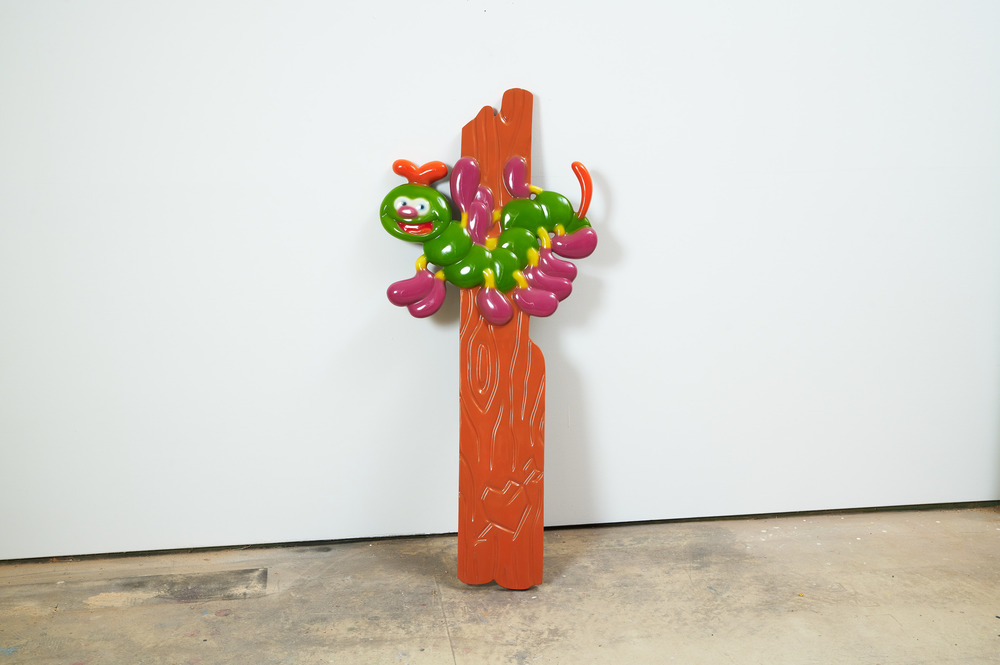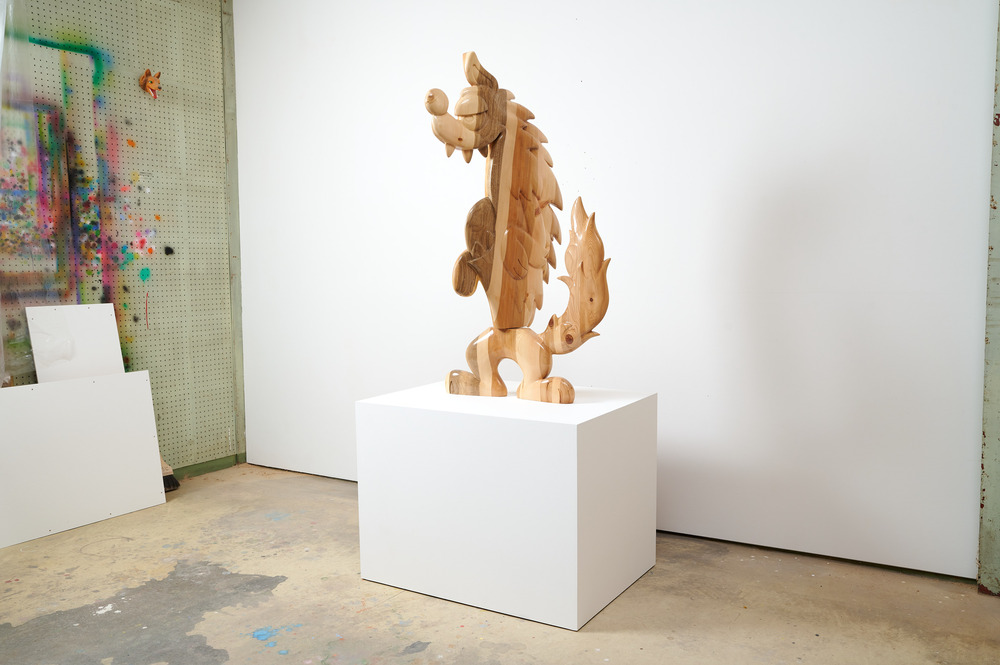Exhibitors
Artist
成田 輝
Hikaru Narita
1989 青森生まれ。2015 武蔵野美術大学大学院造形研究科修士課程美術専攻彫刻コース卒業。 成田輝は主に彫刻を扱い、絵画も制作する。現代美術作家であり、彫刻家であるが画家ではない。成田はアニメーションや玩具などがベースの視覚言語を用いており、愛らしいキャラクターたちがたくさん登場する彼の世界観は一見ポップでキャッチーだ。しかし、そのキャリアに於ける作品群の変化や、作品同士の関係性などを考察すると歪さや、不気味さ、死の匂い、そしてモチーフへの愛情が渾然一体となった交雑種であることが分かる。 木彫の作品は、3次元の造形や物体と空間の関係を模索する彫刻家としての彼の一面を最も色濃く映し出している。彼が彫刻作品のモチーフにしているキャラクターたちはアニメーションの世界の住人たちであり、そこにはもとから奥行きが存在しない。奥行きを持たない彼らを3次元の世界に召喚し、どう彫刻として表現するか考えた成田は「奥行きを潰す」というアイデアにたどり着いた。それは彼らが極端に薄い理由であり、奥行きの潰れた歪な世界で体を捻るとどうなるのか?そのときの正面は一体どこなのか?などの問いかけと共に彫刻の二次元化に挑戦している。 2015年頃に発表を始めた、捨てられた玩具を拡大しFRP彫刻にしたシリーズは成田を注目の作家にしたと言っても過言ではない。一連の作品を発表した後、健康上の理由(ガラス繊維であるFRPが人体に与える影響は悪名高い)もあり新たな表現に移行した成田は一度FRPから離れている。だが、数年の時を経て再び制作されたFRP彫刻の作品群は以前のそれとは全く違った印象になっていた。不機嫌で擦れた質感の玩具のゾンビを操るネクロマンサーだった成田は、ソリッドで鏡面仕上げのサイボーグ生産者に変化していた。より間口の広い魅力 – 更なるポップネスを獲得した、ようにも見える作品群だが、窓の外は荒野のようだし、小鳥は鋭い牙を持つ外敵がいることに気づいているのだろうか?花々も過剰に滑らかな質感と3つとも同じ形状をしており、どうやら自然に咲いた我々の知る花ではなさそうだ。資本主義で充満する世界で生み出される過剰に加工され複製され、管理される存在たちをそれでも愛することやめられないジレンマと共に表現しているように見える。 「画家ではない」と自身を評する成田が制作する絵画作品は、彫刻作品とは別の方法で彼のコンセプトに輪郭を与え、芸術家としての成田が何を追求しているのかを理解する為の助けとなる。スマートフォンの普及により、現代人の目に飛び込んでくるものは常に虚像入り混じった状態である。虚構の世界の存在を現実世界で彫刻として物質化する成田は、そんな今の時代のリアリティというものを強く意識しており、それら2つの世界が交差するのは、成田作品の全体に共通していることである。近年の絵画作品はスマートフォンのディスプレイをイメージした長方形になっており、そこに描かれるのは成田が収集した捨てられた玩具たちだ。ここに1つ重要なポイントがある。 平面の存在を立体化する彫刻作品と、立体の玩具を平面の絵画作品にする。2次元と3次元の移行は逆方向なのだが、そこには確かに共通するアイデアがあると成田は言う。アニメーションの世界の住人たちは、動いている時だけ生を与えられており、動き続けるそれらは流動体と捉えることができる。生には死が待ち受けており、成田はそれを彫刻化することで物質世界に固定している。そして、後は朽ち果てていくだけの捨てられた玩具も噴射する塗料でキャンバスにそのイメージを固定する。それは対象に少しでもより強固な永遠性を与える行為である。想像の世界からやってきた形状のないイメージたちは、動き続けることで生命を獲得する流動体なのである。生きている限り、死とは決別することができない。例え、死は自然の摂理だとしても、ジレンマを持ちながらそれに抗い永遠に触れようとするのが成田作品のゾンビでありサイボーグなのだ。
Hikaru Narita, a contemporary artist, works primarily in sculpture, and also creates paintings, but does not consider himself a painter. Usually, an exhibition consists of a single series of Narita’s works, but for this, his first exhibition in Hong Kong, three series will be pre- sented. Narita’s visual language is based on animation and toys, and his worldview, full of lovable characters, is at first glance pop and catchy. However, when one examines the changes in his work over the course of his career and the relationships between his works, it becomes clear that his work is a hybrid of distortion, weirdness, smells of death, and a love towards these motifs. His wood sculptures most strongly reflect his aspect as a sculptor, who explores three-dimensional forms and the relationship between objects and space. The characters he uses as motifs for his sculptures are the inhabitants of an animated world, in which depth does not exist from the start. Narita thought about how to express them as sculptures by summoning them into the three-dimensional world, where they have no depth, and arrived at the idea of “crushing the depth”. This is the reason the works are extremely thin. What would happen if, for example as seen in the wolf sculpture GAO–!!, you were to twist your body, in a distorted world where in depth itself has been completely crushed? At that point where is the face, as in the front of the sculpture? While asking these kinds of questions, the artist simultaneously attempts to two-dimensionalize these sculptures. It is no exaggeration to say that Narita’s series of FRP sculptures, made from enlarged discarded toys, which he began showing around 2015, has made him an artist to watch. After exhibiting a series of works, Narita moved on to a new style of expression for health reasons (FRP, a fiberglass-based material, is notorious for its effects on the human body), and he has since moved away from FRP. However, after several years had passed, the earlier FRP sculptures, when reproduced, gave a completely different impression from his previous works. Narita, the former necromancer of grumpy, scruffy toy zombies, has become a producer of solid, mirror-finished cyborgs. A more open-ended appeal – more pop, it would seem, in this group of works – but is the wilderness outside the window, and are the little birds aware that they have an outside enemy with sharp fangs? The flowers, too, have an excessively smooth texture and all three have the same shape, and they do not seem to be the naturally blooming flowers we know. The work seems to express the dilemma of not being able to stop loving the excessively processed, reproduced, and controlled beings produced in a world filled with capitalism. Narita describes himself as “not a painter.” The paintings he creates outline his concepts in a different way from his sculptures, and help us understand what he is pursuing as an artist. With the widespread use of smartphones, what people see today is always a mixture of real and fiction. Narita, who materializes the existence of the fictional world, into sculpture in the real world, is keenly aware of the reali- ty of the current era, and the intersection of these two worlds is a common thread throughout Narita’s work. The paintings in this exhibi- tion are rectangular in shape, resembling smartphone displays, and depicted on these rectangles are Narita’s collection of discarded toys. There is one important point here. Narita says that although the transition between two and three dimensions is in the opposite direction, they certainly share a common idea: sculptural works that transform flat entities into three-dimensional forms, and three-dimensional toys into flat pictorial works. The inhabitants of the animation world are given life only when they are in motion, and their continuous movement can be seen as a fluid. Death awaits them, and Narita anchors them in the material world by sculpting them. Even discarded toys, which are left to decay, the image of them are fixed to the canvas with a spray of paint. It is an act that gives the object a stronger permanence. These formless images from the world of the imagination are fluid bodies that acquire life by continuing to move. As long as they are alive, they cannot part from death. Even if death is the order of nature, it is the zombies and cyborgs of Narita’s work that resist this dilemma and attempt to touch eternity.
Galleries
Galleries









